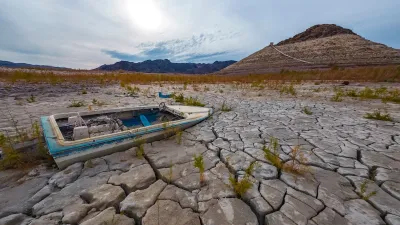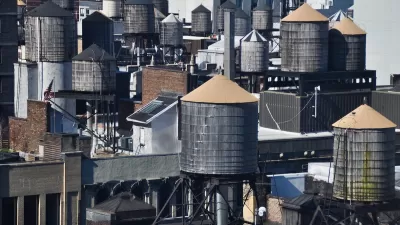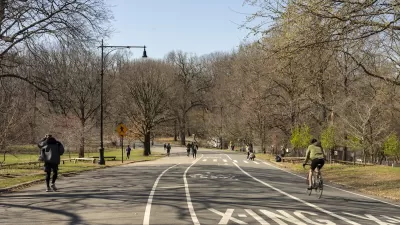Brown lawns may be less aesthetically pleasing than synthetic lawns, but are they safer?

California Governor Jerry Brown has called for 50 million square feet of lawns in the state to be removed; water districts across the state are offering rebates for lawn removal; and cities across the thirsty state impose fines on residents who water their lawns too often.
Thus it is that the state's capital is wrestling with the merits of a 30-year-old ban on artificial turf in front yards. According to Joy Patterson, principal planner for the city's Planning and Design Commission, the origins of the rule stem from aesthetic concerns. She explains that the turf of 1984 was used primarily for commercial applications and golf courses, but modern-day turf has evolved to look more like real grass.
"A review by Planning Commission staff, at the request of Councilman Jeff Harris, found artificial turf to be drought tolerant, with excellent built-in drainage and no irrigation requirements," reports Brenna Lyles for the Sacramento Bee.
But residents and Planning officials have environmental and safety concerns about the materials used to manufacture such life-like grass. Among other things, writes Lyles, residents "have questioned the safety of the ground-up, recycled tires that make up the tiny ‘crumb rubber’ pellets that are intended to give the surface more bounce and mimic dirt."
Councilwoman Angelique Ashby is not on board. "There's probably no way I would support it, ever. But, I would at least encourage my colleagues to consider how are we going to do enforcement so that we make sure that it's high quality, and that it doesn't have toxic runoff and that it is recycled appropriately if we're gonna use it, and that it is installed appropriately. How would we properly monitor those things?"
FULL STORY: Sacramento planning commission to consider allowing artificial turf in front yards

Study: Maui’s Plan to Convert Vacation Rentals to Long-Term Housing Could Cause Nearly $1 Billion Economic Loss
The plan would reduce visitor accommodation by 25,% resulting in 1,900 jobs lost.

North Texas Transit Leaders Tout Benefits of TOD for Growing Region
At a summit focused on transit-oriented development, policymakers discussed how North Texas’ expanded light rail system can serve as a tool for economic growth.

Why Should We Subsidize Public Transportation?
Many public transit agencies face financial stress due to rising costs, declining fare revenue, and declining subsidies. Transit advocates must provide a strong business case for increasing public transit funding.

How to Make US Trains Faster
Changes to boarding platforms and a switch to electric trains could improve U.S. passenger rail service without the added cost of high-speed rail.

Columbia’s Revitalized ‘Loop’ Is a Hub for Local Entrepreneurs
A focus on small businesses is helping a commercial corridor in Columbia, Missouri thrive.

Invasive Insect Threatens Minnesota’s Ash Forests
The Emerald Ash Borer is a rapidly spreading invasive pest threatening Minnesota’s ash trees, and homeowners are encouraged to plant diverse replacement species, avoid moving ash firewood, and monitor for signs of infestation.
Urban Design for Planners 1: Software Tools
This six-course series explores essential urban design concepts using open source software and equips planners with the tools they need to participate fully in the urban design process.
Planning for Universal Design
Learn the tools for implementing Universal Design in planning regulations.
Ascent Environmental
Borough of Carlisle
Institute for Housing and Urban Development Studies (IHS)
City of Grandview
Harvard GSD Executive Education
Toledo-Lucas County Plan Commissions
Salt Lake City
NYU Wagner Graduate School of Public Service





























